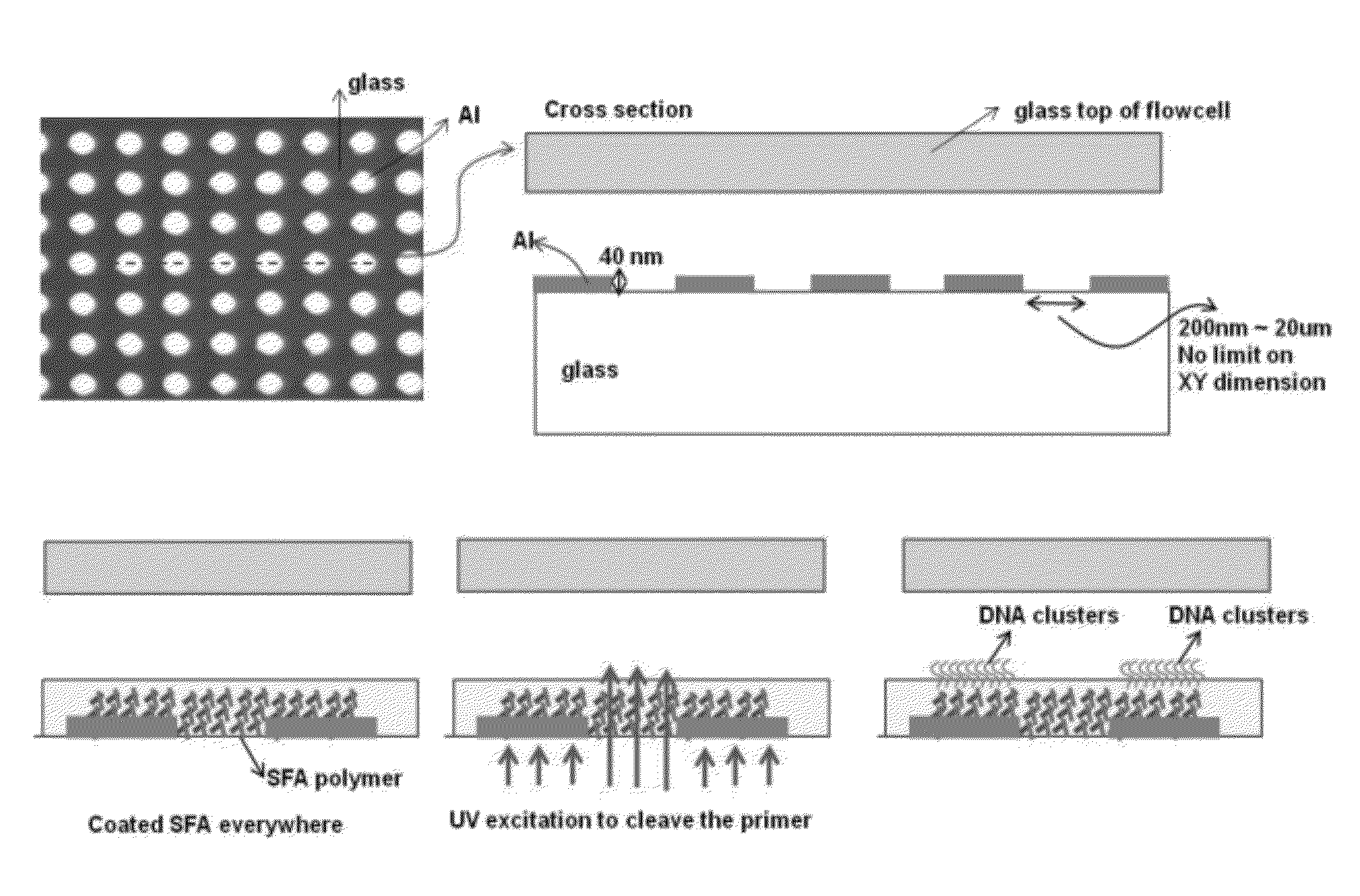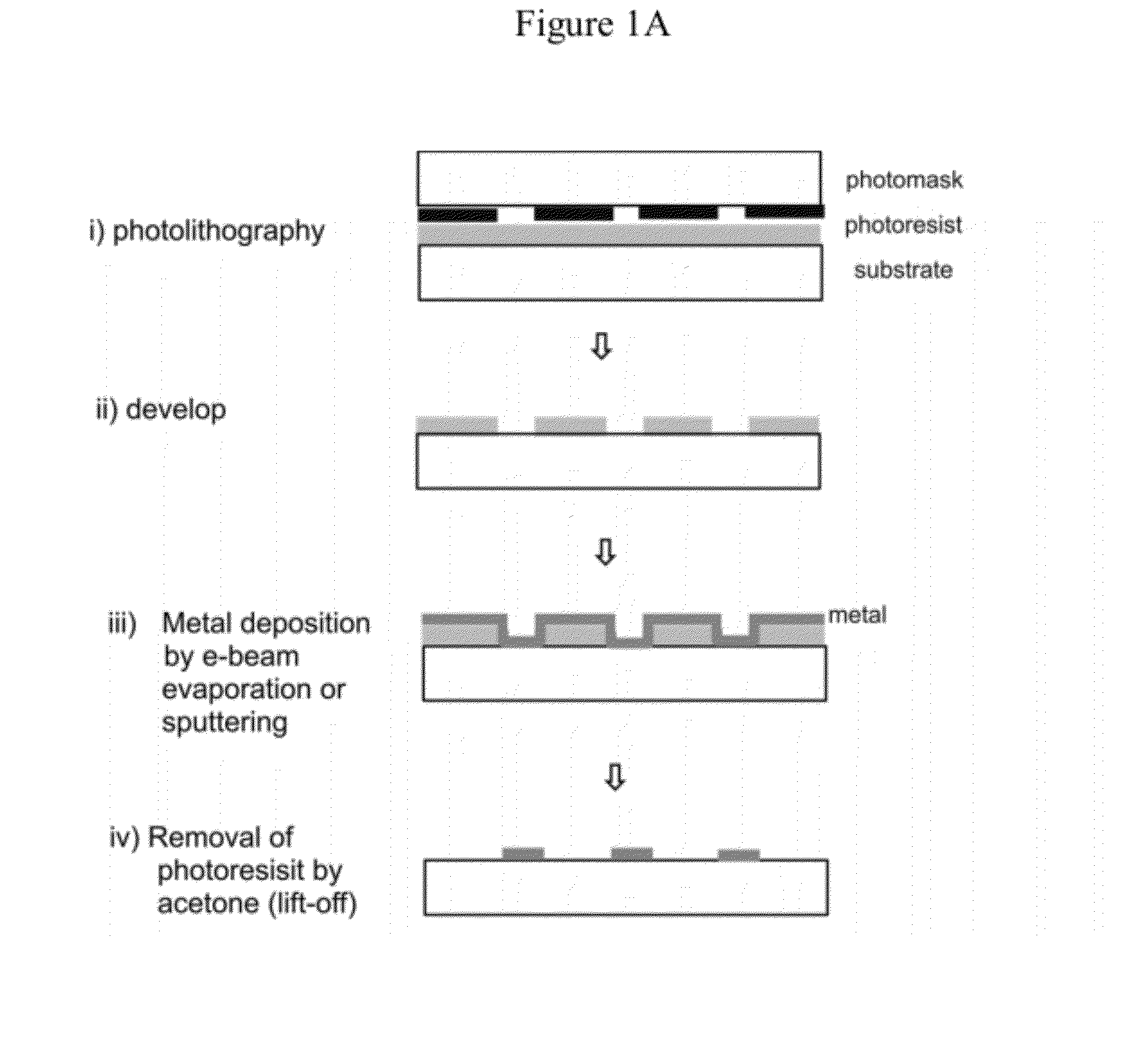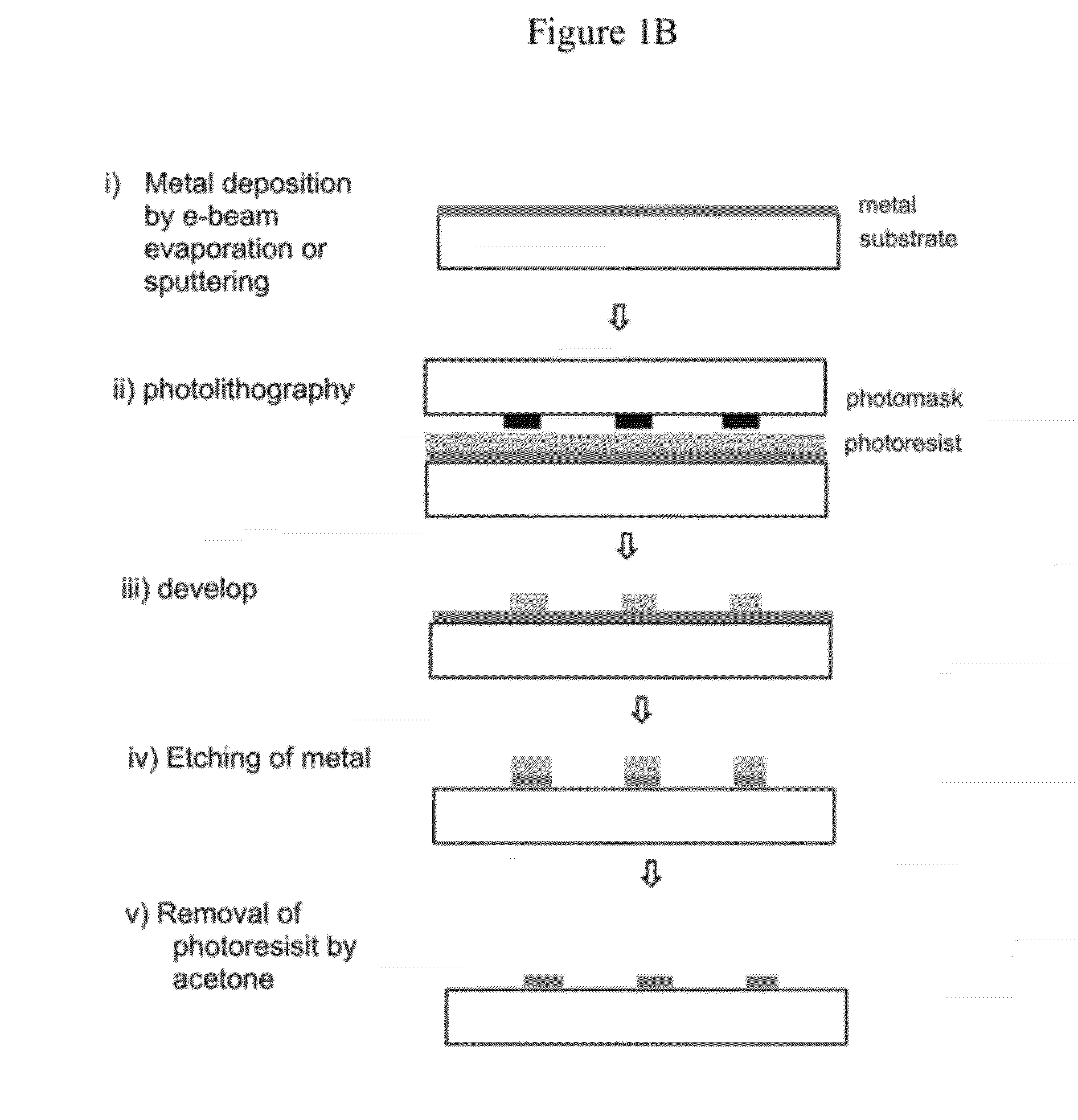Patterned flow-cells useful for nucleic acid analysis
a flow-cell and nucleic acid technology, applied in the field of gene analysis, can solve the problems of difficult to predict which if any is amenable to cost-reducing improvements, hindering the technology from moving beyond the research center, and difficult to predict which can be modified
- Summary
- Abstract
- Description
- Claims
- Application Information
AI Technical Summary
Benefits of technology
Problems solved by technology
Method used
Image
Examples
example i
Preparation and Analysis of Aluminum Oxide Patterned Flow-Cells
[0117]This example demonstrates preparation of a glass substrate having aluminum oxide metal surface regions and interstitial surface regions where the metal is not present on the glass surface. This Example also demonstrates enhancement of DNA cluster formation on the metal-coated surfaces compared to the interstitial surfaces.
[0118]Glass flow-cells (Illumina, Inc., San Diego, Calif.) were coated with aluminum oxide patches as shown in FIG. 1A or 1B. Briefly, FIG. 1A shows a profile of a glass flow-cell treated to create metal patches (also referred to as metal regions) using a lift-off approach. More specifically, a photoresist layer was evenly coated over the surface of the glass flow-cell and patches of the photoresist were removed by photolithography to expose patches of the glass surface. A layer of aluminum oxide was then deposited on the surface to form a continuous thin film over the photoresist regions and glas...
example ii
Application of Metal Patches as Near-Field Photo-Masks
[0126]This Example describes creation of an array of nucleic acid features. A surface having metal patches separated by interstitial regions was coated with a gel and photo-cleavable nucleic acid primers were attached to the gel. Primers that attached to portions of the gel that coat interstitial regions were photo-cleaved while primers that were attached to portions of the gel that coated metallic patches were masked from photo-cleavage. The remaining patches of nucleic acid primers formed an array of features on the surface.
[0127]Glass flow-cells (Illumina, Inc., San Diego, Calif.) were coated with gold patches using methods set forth in Example I, except that metal deposition was carried out with gold instead of aluminum oxide. The resulting flow-cell had eight lanes each with 12 gold patches separated by glass interstitial regions. The gold-coated flow-cell was then coated with silane-free acrylamide (SFA) as described in Exa...
example iii
[0131]This example describes methods that can be used to create an array of nucleic acid features.
[0132]FIG. 5 provides a diagrammatic representation of two exemplary methods for creating an array of features, wherein the features contain a gel and / or nucleic acids. Generally, a flow-cell is created as described in Examples I or II or elsewhere herein. The flow-cell surface has metal regions (such as gold or aluminum oxide) separated by interstitial regions (such as glass). A gel layer, such as polymerized silane-free acrylamide (SFA), is present as a continuous coating over the flow-cell surface. The flow-cell can also optionally include primers attached to the gel layer. The flow-cell is irradiated from below, for example with UV light, such that the metal regions provide a near-field mask to block irradiation of regions of the gel that are above the metal regions, whereas regions of the gel that are located above glass interstitial regions are irradiated. If primers are attached ...
PUM
| Property | Measurement | Unit |
|---|---|---|
| thickness | aaaaa | aaaaa |
| thickness | aaaaa | aaaaa |
| thickness | aaaaa | aaaaa |
Abstract
Description
Claims
Application Information
 Login to View More
Login to View More - R&D
- Intellectual Property
- Life Sciences
- Materials
- Tech Scout
- Unparalleled Data Quality
- Higher Quality Content
- 60% Fewer Hallucinations
Browse by: Latest US Patents, China's latest patents, Technical Efficacy Thesaurus, Application Domain, Technology Topic, Popular Technical Reports.
© 2025 PatSnap. All rights reserved.Legal|Privacy policy|Modern Slavery Act Transparency Statement|Sitemap|About US| Contact US: help@patsnap.com



